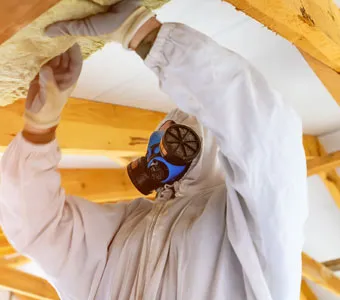Class Action Claims: The Fight For Justice For Victims Of Engineered Stone Silicosis
The fight for justice for victims of engineered stone silicosis has become a critical issue for workers exposed to harmful levels of silica dust during the fabrication of engineered stone countertops. As awareness grows about the health risks of silicosis, more individuals are uniting in their efforts to hold manufacturers accountable for their negligence.
Class action legal claims provide a powerful tool for seeking justice, allowing victims to combine their claims and collectively pursue compensation for medical expenses, lost wages, pain, and suffering.
Rising Dangers of Engineered Stone Silicosis Now Leading to Jury Awards and Settlements
In a groundbreaking ruling, a Los Angeles County jury awarded $52.4 million to Gustavo Reyes Gonzalez, a worker who developed silicosis from cutting artificial stone countertops. This landmark case marks the first trial in the U.S. involving silicosis caused by engineered stone — a product containing high amounts of silica.
Despite using water suppression and high-quality masks, Gonzalez’s exposure to fine silica dust led to irreversible lung damage, requiring a double-lung transplant. The lawsuit was filed against 34 manufacturers, with 29 settling, while three went to trial.
The verdict sends a clear message to countertop manufacturers about the dangerous effects of their products, especially those containing upwards of 90% silica. Reyes’ attorney, Raphael Metzger, emphasized that alternatives to these hazardous materials are available. This case highlights the risks associated with engineered stone and the ongoing silicosis epidemic, particularly in industries like stone cutting and fabrication.
Historical Use of Class-Action Cases to End Dangerous Business Practices
Class-action lawsuits have a long history of challenging harmful corporate practices, forcing businesses to confront the consequences of unsafe products and environmental damage. For example, in the landmark 1994 case of Ford Motor Co. v. Donovan, Ford was held accountable for defective cars that were prone to sudden acceleration.
This class action resulted in a significant settlement for the plaintiffs and forced Ford to redesign the affected models. Another notable case is the tobacco litigation in the 1990s, where class actions against cigarette manufacturers led to the Master Settlement Agreement, a $206 billion deal that compelled tobacco companies to change advertising practices and contribute to public health programs.
Benefits of Class-Action Court Cases for Plaintiffs
Class-action lawsuits offer significant advantages for plaintiffs, particularly those dealing with issues that affect large groups of people, such as exposure to silicosis through engineered stone countertop fabrication.
One of the primary benefits is cost efficiency: pursuing a claim on one’s own may be prohibitively expensive, but a class action allows plaintiffs to pool resources, share legal costs, and ensure legal representation without financial burden. This also helps level the playing field for workers who might not otherwise afford legal help.
Class actions provide a sense of solidarity for victims who might otherwise struggle to gain recognition for their cases. In the context of silicosis, plaintiffs can work together to amplify their voices and secure compensation for medical costs, lost wages, and future care. Class actions also increase the likelihood of a larger, more influential settlement or ruling, pressuring corporations to make safer products and forcing attention toward critical safety standards.
FAQs
Q: How Much Is a Settlement for a Silicosis Class Action Claim?
A: Settlement amounts in a silicosis class action can vary widely based on the severity of the disease, the extent of silica exposure, and the number of affected plaintiffs. Typically, class action settlements can range from hundreds of thousands to millions of dollars, depending on the scope of the case and the number of workers involved. Working with an experienced attorney ensures fair compensation for your condition.
Q: What Is the Average Payout for Silicosis as a Personal Injury Claim?
A: Similar to a class action settlement, the average payout in a silicosis personal injury claim depends on factors like the severity of a person’s condition and the evidence available to link their workplace to their disease. These payouts may also range from a few hundred thousand dollars to millions, especially in large cases involving significant health complications.
Many workers may consider hiring an attorney for their individual claim before electing to file a class action claim.
Q: Can I Join a Class Action Claim for Silicosis?
A: Yes, if you’ve been exposed to silica dust and developed silicosis, you may be eligible to join a class action. These legal cases allow individuals with similar claims to come together and seek compensation from the responsible parties. Class actions can increase the efficiency of the legal process, allowing for collective recovery and potentially larger settlements or verdicts. Consulting with a lawyer can help determine your eligibility.
Q: What Are the Benefits of Joining a Silicosis Class Action Claim?
A: Joining a silicosis class action can offer several advantages, including shared legal costs, faster case resolution, and the collective strength of numerous plaintiffs. This approach allows victims of silicosis to unite against common defendants, increasing the chances of a favorable outcome.
Class actions can provide greater financial compensation, especially when multiple workers are affected by the same hazardous exposures. Working with a skilled attorney ensures your interests are well-represented throughout the process.
Q: How Do I Join a Class Action Claim for Silicosis?
A: To join a silicosis class action, you must meet specific eligibility criteria, including a diagnosis of silicosis due to silica exposure at work. Your attorney can help you gather the necessary medical records, exposure history, and other documentation to determine your eligibility. Once approved, you’ll be part of the collective action, which may lead to a more streamlined process for obtaining compensation.
Schedule Your Class Action Silicosis Claim Today
Silicosis can develop from inhaling crystalline silica dust over prolonged periods of time, which is most common in jobs like countertop fabrication. Workers who have developed silicosis may be eligible to participate in a class action claim, which allows multiple victims to join forces and pursue legal action against the manufacturers responsible for their exposure.
Class actions can streamline the process and increase the chances of a fair settlement for all affected workers. At Wallace & Graham, we have vast experience handling silicosis claims and can help you navigate the complex legal process. Schedule your consultation today to discuss how we can assist in securing the compensation you deserve.






